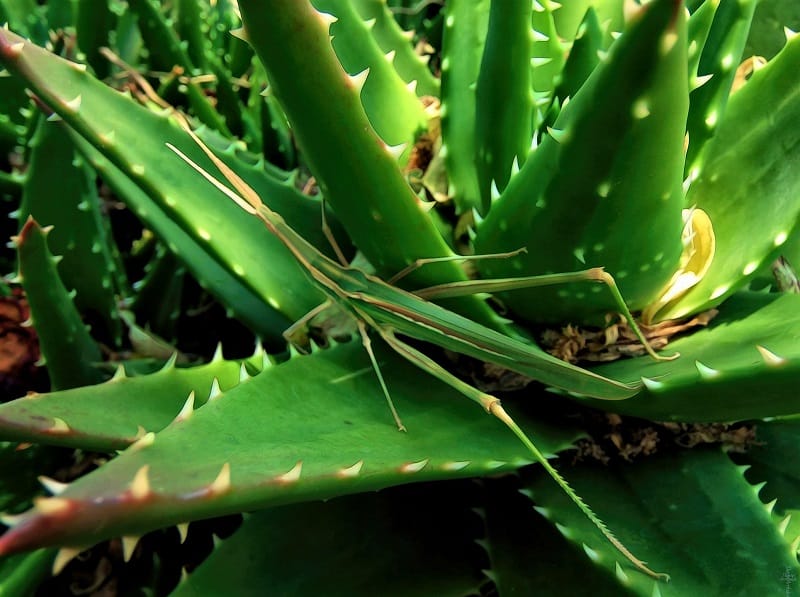The Aloe Nobilis ‘Gold Tooth Aloe’ has big green leaves with a beautiful white and yellowish teeth.
Usually, the bright sunlight can change the colors of the leaf.
You can see colors like rose, yellow, white, and orange.
This Aloe forms large rosettes.
This species possibly originated as a hybrid of a mitriformis or A. distans crossed with a brevifolia.
This succulent is very popular with xeriscapers, landscapers, and for indoor gardeners.
The Aloe is an enduring evergreen succulent that develops small rosettes.
With time the sunlight will turn the leaves into a beautiful orange.
The leaves have yellow teeth along the edges.
One of the most remarkable highlights of this plant is how it produces a large number of offsets.
This attribute makes it great to propagate in large areas of your garden.
You may like Aloe “Twilight Zone”
Tips to take care of the Aloe nobilis “Gold-Tooth Aloe”
Illumination
All plants of the genus Aloe need a lot of light to grow healthy and bloom to the fullest.
It’s recommended to expose the plants to direct sunlight in the less warm times of the year and move to semi-shade or under filtered light in summer.
The intense summer sun is the main cause of many burns leaves.
Temperature
They are plants that appreciate growing in cool or hot climates.
Some species survive in environments where daytime temperatures exceed 40°C/104 °F; These are plants of hot climates.
Temperatures below 10°C/50°F are dangerous for these plants because they encourage the proliferation of fungi.
In countries with extreme winters, it’s always recommended to grow in pots to be easily transported to a warmer environment (examples: greenhouses, home interior, etc.)
Substratum
They are mostly quite resistant to growing on a wide variety of substrates, but they must have optimal drainage and good aeration.
Use 2/3 of a universal substrate or garden soil with 1/3 of coarse sand or gravel.
Watering
These are “succulent plants” that tolerate extensive droughts; that is, they prefer water scarcity than excess.
They are susceptible to rot if the substrate remains wet for a long time.
It’s advisable to water when the substrate has dried completely (usually 1-2 times weekly) if the plant is in the growing season; in a state of latency, we must reduce the frequency to biweekly or monthly.
Pruning
These plants are not pruned.
Only leaves and flower spikes that have already dried should be removed to prevent them from being attacked by opportunistic pests.
Transplant
These plants are usually colonial, forming numerous babes plants at their base, creating groups of many plants in a single area.
In many cases, the pots do not support a large number of plants and tend to break (depends on the clear material); It is recommended to transplant when the roots arise through the drainage holes or when the small babe plants stick out from the edge of the pot.
Plagues and diseases
They suffer attacks from mealybugs, aphids, snails, slugs, and even birds.
All pests must be eradicated quickly to avoid serious damage to the plant health or new pathologies associated with viruses or bacteria transmitted by these same pests.
The main enemy of plants of this genus are fungi; these appear if the humidity is very high and the substrate flooded.
Fungi are the main culprits in the death of many representatives of this group.
Propagation
To multiply, this succulent is very simple, you can do it by separating the small babe plants that appear at the base of most species.
You can do it with a sharp and disinfected object that must be used to make the cut.
Then we must let the wound dry for 24 hours and then plant on a sandy and slightly moist substrate.
It should not be exposed to the sun until they take root.
Multiplication can also be carried out by means of seeds that we must germinate in a substrate made with 2/3 of coarse sand and 1/3 of a universal substrate at 18-24 ° C.
